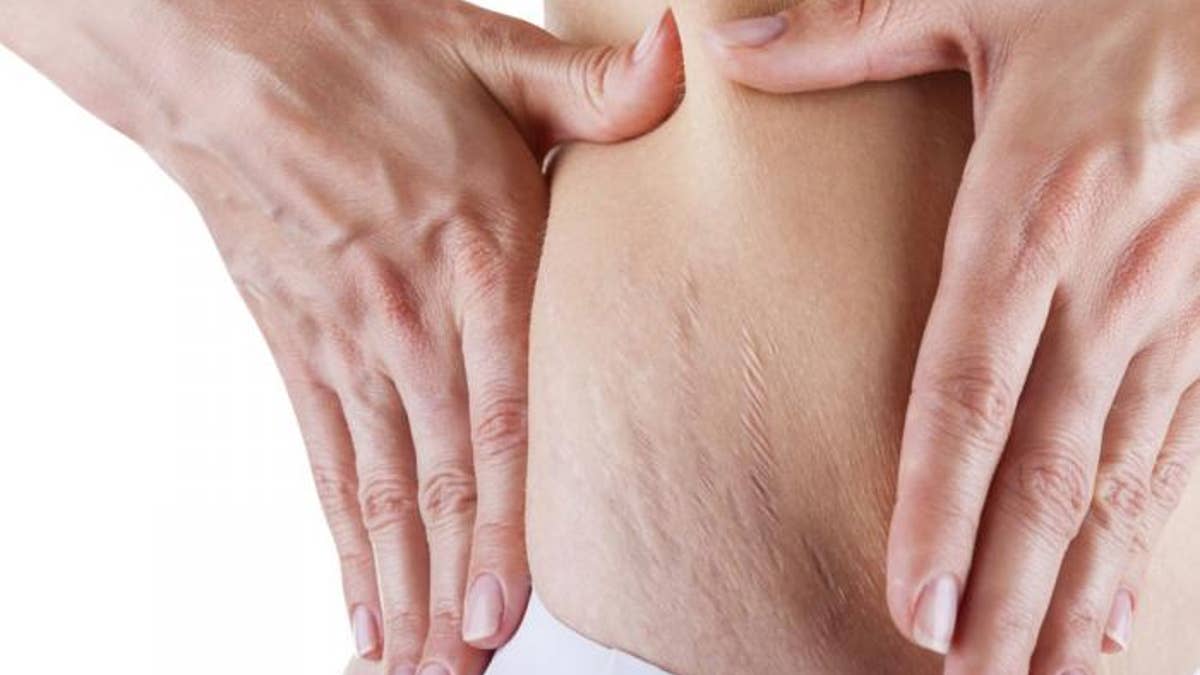
Not feeling like a tiger who's earned her stripes? You’re not alone.
It’s been reported that 90 percent of women will get stretch marks — those thin, ropey white lines on your stomach, thighs or breasts — over their lifetimes.
The cause behind these pesky marks isn’t limited to pregnancy. They can result from rapid weight change, excess exercise, adolescence, or anything that will literally stretch or “overextend” the connective tissues under your skin. In other words, it’s a sign your skin couldn’t exactly bounce back.
“The most common reasons people get stretch marks, or striae, include puberty, weight fluctuations and pregnancy in women,” says Dr. Julia Tzu, the clinical assistant professor of dermatology at New York University's School of Medicine. “There are other more obscure reasons that people develop stretch marks, such as long-term use of systemic steroids, and certain conditions including Cushing’s syndrome.”
Did we also mention that nearly anyone, regardless of age, can get these glaring lines? Studies say genetic factors, including inherited defects of connective tissues, can potentially play a significant role in determining when they appear.
Many have long used cocoa butter to lighten up these troublesome marks, or hid them underneath clothing, but is it possible to prevent stretch marks altogether, despite what our body has in mind? After all, swimsuit season is officially here, the last thing women want to do is cover up during the steamier months. Isn't there anything else that can be done?
Warning: You may want to sit down for this one.
“There is nothing we can do to prevent stretch marks,” says Dr. Elizabeth Tanzi, co-director of the Washington Institute of Dermatologic Laser Surgery in Washington, D.C. “When the skin stretches rapidly, the change in the skin breaks the elastic fibers, and once broken, it is difficult to regenerate them. Red-purple stretch marks are generally easier to remove than the white-silvery ones, which are considered mature stretch marks.”
Fortunately, not all hope is lost. It is possible to treat stretch marks, but it cannot be done with creams or lotions alone, which experts say are ineffective.
“Stretch marks, when caught at the early reddish stage, can be effectively treated with certain types of lasers,” says Tzu. “When caught at the later white stage, stretch marks are more difficult to treat. However, there still are ways to improve its appearance even at a later stage with laser treatments. Multiple treatments are almost always involved. A dermatologist with experience in laser surgery is recommended for these types of treatments. Unfortunately, topical treatments are much less, if at all, effective for the removal of stretch marks.”
“It is hard to repair the elastic fibers, which is why over-the-counter formulas don’t work,” adds Tanzi. “The bottom line is that there is no scientific proof any topical products work to improve stretch marks. [However], fraxel lasers deliver heat to the skin to gently stimulate collagen production, helping to blend the stretch marks into the surrounding normal skin.”
The major downer? These laser treatments can range from $400 to about $1,000 per session — and there’s no guarantee stretch marks won’t return.
If you’re really self-conscious about yours, though, you can do something about them. All medical experts agree it’s crucial to visit a trusted dermatologist, who can provide the best recommendation on how to combat your stretch marks.
There is one other simpler (though temporary) solution. According to Dr. Stafford Broumand, New York City-based plastic surgeon and associate clinical professor of plastic surgery at the Mount Sinai Hospital, just add some color.
“Women can try using a self-tanner to camouflage the marks and even out their skin tone,” he suggests.
Looks like you might be able to rock a bikini worry-free after all.
